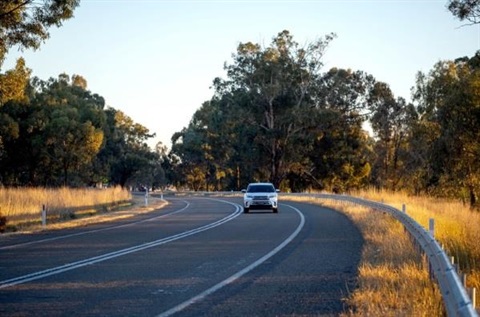Regional Roads a Risk
Published on 29 February 2024

Regional Roads a Risk
Driving in regional, rural and remote areas of NSW can be a challenging task. Environmental factors such as poorer road condition and design, higher speed limits, increased roadside hazards and few public transport or other options contribute to a greater risk and severity of a crash on regional roads.
Understanding these unique challenges is essential before you set off on your drive.
The Facts:
- Around 81 per cent of all fatal crashes on country roads involve local residents.
- Around 78 per cent of all country fatal crashes occur on roads with a speed limit of 80km/h or more, with 47 per cent occurring in 100km/h zones.
- Speed is a factor in 44 per cent of all fatal crashes on country roads, followed by fatigue (24 per cent) and illegal alcohol (18 per cent).
- In the Temora Shire specifically from 2018 to 2022, speeding was a factor in 24% of all crashes in our area followed by fatigue (18%) and illegal alcohol (15%).
Many country roads are narrow, with many curves and lack more advanced safety features found on highways and motorways. On narrow roads it may be necessary to drive slower than the speed limit.
Driving on unsealed roads can be challenging – tyres can lose traction and loose dirt and gravel can be thrown up by other vehicles. On unsealed roads vehicles take longer to stop and are harder to control and all vehicles are at risk of skidding, sliding or rollover. When driving on unsealed roads, slow down and increase the distance between you and other vehicles.
Here are some helpful tips for motorist when driving on regional and local roads:
- Overtaking other vehicles can be dangerous. The difficulty with overtaking is judging the space required to complete the manoeuvre safely.
- Avoid driving in wet, icy, snowy or foggy conditions wherever possible as this can increase the risk of a crash, even for experienced drivers on routes they know well.
- Dust severely limit yours visibility. Avoid travelling if there is a dust storm.
- Avoid driving at sunrise and sunset. Many roads in NSW have an east-west orientation. When the sun is low in the sky (at sunrise and sunset), clear vision is particularly difficult, meaning you might not see oncoming vehicles or animals.
- If you come across a flooded road, do not attempt to drive through, no matter what type of vehicle you are driving. If you’re travelling in a flood prone area it’s important to monitor any warnings issued by the Bureau of Meteorology.
When driving on regional, rural and remote roads drive with care to ensure you arrive to your destination safely. Even on roads that you drive on frequently, drive sensibly, follow the road rules and drive to the conditions.